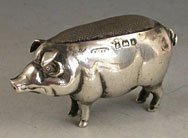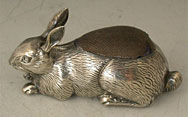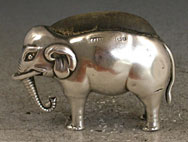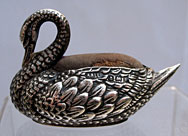Pocket Pin Case
Patent/design registration not found
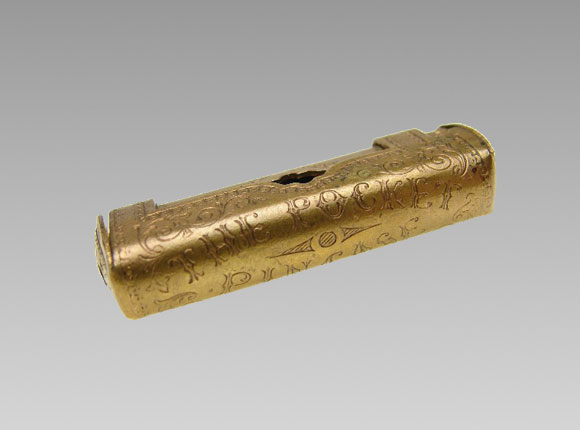
Needle Case (photographs courtesty of Bunny's Place)
Design Details
Needle Case Type: |
Flat-Names |
Patent/Registered to: |
Unknown |
Patent/Design Representation #: |
Unknown |
Patent/Design Registration Date: |
Unknown |
Location of Patent/Design Registration: |
Unknown |
Reference #: |
Unknown |
Dimensions: |
3.7 x 1.2 |
Material: |
Brass version and nickel-silver or nickel-plated version |
Name Variations: |
W. Avery & Son - Redditch |
Other Variations: |
a) With cut-out center
b) Without cut-out center |
Additional Photographs
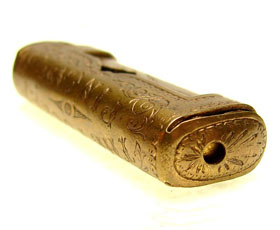
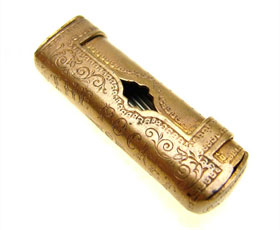
Side and top views showing cut-out section
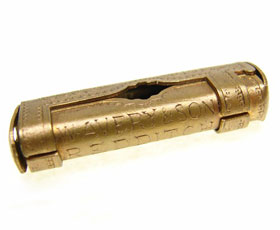
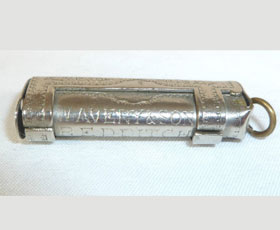
Signature detail and nickel-silver version (from eBay) without cut-out section
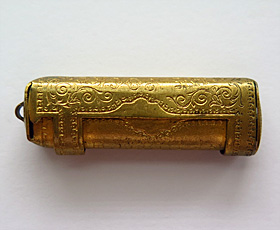
Brass version without cut-out section
Here are some other antique pocket sized pin cases and pin cushions from the mid to late 19th century and early 20th century.
Mauchline Ware
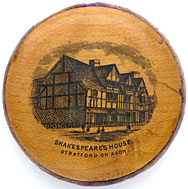
Front side
Wooden souvenirs dominated the market during most of the Victorian era. Woodworkers from the town of Mauchline in Scotland created a variety
of small items using a creamy white sycamore wood onto which they transferred engravings of scenes from various tourist attractions. These
became known as Mauchline Ware and needlework tools, like the pin case shown here, were some of the most popular items. Interest in travel
to Scotland increased during the 19th century because of the rise of the middle class, ease of train travel and the popularity of Robert Burn’s
poetry and Sir Walter Scott’s romantic novels. As tourist travel increased the companies that produced Mauchline ware expanded to include
landmarks from other areas of the United Kingdom, North America, Europe, Australia and South Africa.
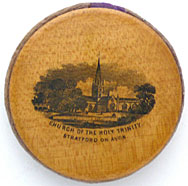
Reverse side
Tartenware
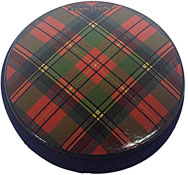
Some of the same companies that produced Mauchline ware also created Tartanware. In the 1840s one of these companies invented an inking
machine which replicated tartan patterns on paper which could be glued onto wooden objects. Black paint covered with wavy gold lines was added
to some items to mask the paper joints and small gold letters designated the clan the tartan represented. As a result tartanware was born and
it became especially fashionable after 1852 when Queen Victorian and Prince Albert purchased Balmoral Castle in Scotland and subsequently popularize
“all things Scottish”.
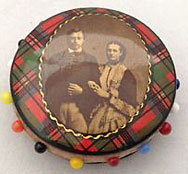
Birmingham Silver
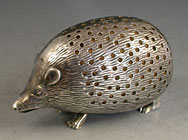
During the Edwardian period, 1901-1910, silver pin cushions in a wide variety of shapes were produced in the city of Birmingham, UK. At the
time Birmingham was one of the largest producers of silver objects in Europe.
